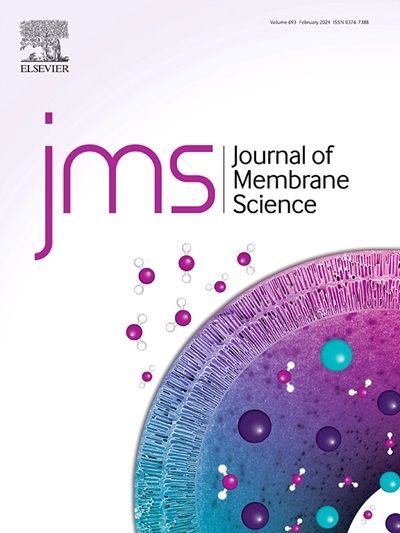Efficient activation of peroxymonosulfate by sulfur-coordinated iron-based two-dimensional composite membrane (S–Fe@G) via sulfur doping and nanoconfined catalysis
IF 8.4
1区 工程技术
Q1 ENGINEERING, CHEMICAL
引用次数: 0
Abstract
The combination of nanoconfined catalysis, sulfate radicals based-advanced oxidation processes (SR-AOPs) and membrane filtration processes, can remove organic pollutants efficiently while eliminating the need for secondary recovery of heterogeneous catalysts. In this study, sulfur-doped iron-based carbonaceous two-dimensional composite nanoconfined catalytic membranes (S–Fe@G membranes) were prepared to rapidly activate peroxymonosulfate (PMS) for efficient water purification. The best performing 2S–20Fe@G catalytic membrane/PMS system achieved an ultra-rapid (158.7 ms retention time) removal (94.9 %) and high mineralization (>66.7 %) of tetracycline (TC, 20 mg/L) due to the generation of 1O2, Fe(IV)=O and •OH. The introduction of sulfur was found to significantly improve the electronic structure and electron transfer efficiency of S–Fe@G. This enhancement promoted the activity of Fe reaction sites and increased the multivalent distribution of Fe. Additionally, sulfur incorporation lowered the reaction energy barrier for PMS dissociation and accelerated the Fe(II)/Fe(III) cycle. These combined effects resulted in the rapid degradation of pollutants and ensured the stable operation of the catalytic system over extended periods. In addition, the nanoconfined space composed of the two-dimensional carbonaceous structure was conducive to the accumulation of pollutants and the rapid activation of PMS. The 2S–20Fe@G catalytic membrane achieved a high selective removal of TC (>94.5 %) and substantial mineralization of pollutants (>52.1 %) in both simulated (Humic acid + TC) and real (Lake water + TC) waters, demonstrating its potential for practical applications.

求助全文
约1分钟内获得全文
求助全文
来源期刊

Journal of Membrane Science
工程技术-高分子科学
CiteScore
17.10
自引率
17.90%
发文量
1031
审稿时长
2.5 months
期刊介绍:
The Journal of Membrane Science is a publication that focuses on membrane systems and is aimed at academic and industrial chemists, chemical engineers, materials scientists, and membranologists. It publishes original research and reviews on various aspects of membrane transport, membrane formation/structure, fouling, module/process design, and processes/applications. The journal primarily focuses on the structure, function, and performance of non-biological membranes but also includes papers that relate to biological membranes. The Journal of Membrane Science publishes Full Text Papers, State-of-the-Art Reviews, Letters to the Editor, and Perspectives.
 求助内容:
求助内容: 应助结果提醒方式:
应助结果提醒方式:


